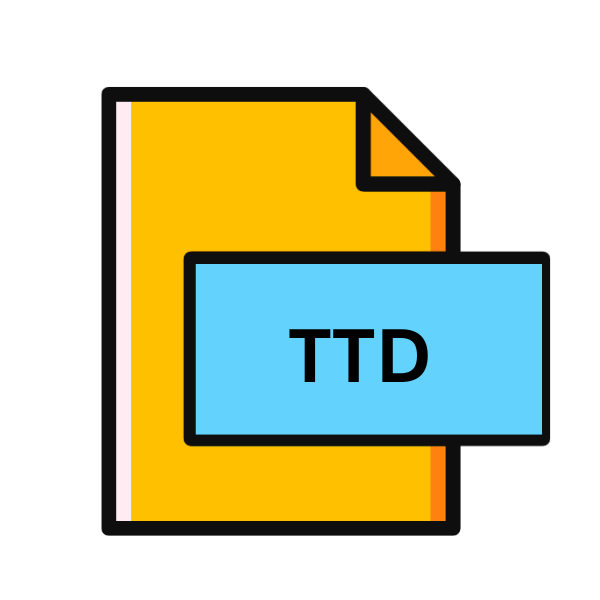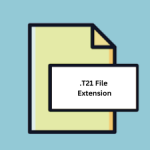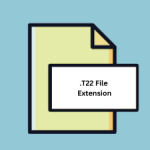.TTD File Extension

Tinytag Explorer Data File
| Developer | Tinytag |
| Popularity | |
| Category | Data Files |
| Format | .TTD |
| Cross Platform | Update Soon |
What is an TTD file?
In the digital realm, file extensions are akin to unique identifiers, each denoting a specific type of file and dictating how a system should handle it.
One such file extension is .TTD, which stands for Tinytag Explorer Data File. These files play a crucial role in storing data collected by Tinytag data loggers, which are widely used in various industries for monitoring environmental parameters like temperature, humidity, and more.
More Information.
The history of the .TTD file extension is closely intertwined with the evolution of Tinytag data loggers. These devices were designed to provide reliable and accurate data-logging solutions for professionals across different fields.
The .TTD file format was specifically crafted to efficiently store the data recorded by these loggers, ensuring easy retrieval and analysis.
Origin Of This File.
Tinytag data loggers, developed by Gemini Data Loggers, have been instrumental in various sectors such as healthcare, food processing, pharmaceuticals, and transportation.
As these industries demand precise monitoring and recording of environmental conditions, the need for an efficient data storage format led to the creation of the .TTD file extension.
File Structure Technical Specification.
The .TTD file format follows a structured approach to store data collected by Tinytag data loggers. It typically comprises a header section followed by data records. The header contains essential information such as the device type, recording interval, and timestamp format.
The data records consist of timestamped measurements recorded by the data logger, including temperature, humidity, and other parameters depending on the device’s sensors.
The technical specifications of .TTD files may vary slightly depending on the model of the Tinytag data logger used.
They generally adhere to a consistent structure to maintain compatibility with Tinytag Explorer software and other analysis tools.
How to Convert the File?
Converting .TTD files to other formats, such as CSV (Comma-Separated Values), is a common necessity for compatibility with different software applications.
While direct conversion methods may not be available natively, you can achieve this indirectly through Tinytag Explorer, the software associated with .TTD files. Here’s a step-by-step guide on how to convert .TTD files to CSV:
1. Open Tinytag Explorer:
- Launch Tinytag Explorer on your computer.
- If you haven’t already installed it, you can download and install the software from the Gemini Data Loggers website.
2. Import the .TTD File:
- In Tinytag Explorer, go to the File menu and select “Open” or “Import.”
- Navigate to the location where the .TTD file is stored and select it.
- Click “Open” or “Import” to load the .TTD file into Tinytag Explorer.
3. View Data:
- Once the .TTD file is imported, you should see the recorded data displayed within Tinytag Explorer.
- This data typically includes timestamps and sensor readings collected by the Tinytag data logger.
4. Export to CSV:
- In Tinytag Explorer, go to the File menu and select “Export” or “Save As.”
- Choose the CSV format as the export option. Some versions of Tinytag Explorer may label this option as “CSV (Comma Separated Values)” or similar.
- Specify the destination folder where you want to save the CSV file.
- Click “Save” or “Export” to initiate the conversion process.
5. Verify Conversion:
- Once the conversion is complete, navigate to the destination folder where you saved the CSV file.
- Open the CSV file using a text editor or spreadsheet software to verify that the data has been successfully converted from the .TTD format.
Advantages And Disadvantages.
Advantage:
- Compatibility: .TTD files are compatible with Tinytag Explorer software, facilitating easy data analysis and visualization.
- Data Integrity: The structured nature of .TTD files ensure data integrity, minimizing the risk of corruption or loss.
- Efficiency: .TTD files are optimized for efficient storage and retrieval of data, making them suitable for long-term monitoring applications.
Disadvantage:
- Proprietary Format: .TTD files are proprietary to Tinytag data loggers, limiting interoperability with other software or systems.
- Limited Scalability: While .TTD files are suitable for small to medium-scale data logging applications, they may not be ideal for large-scale deployments requiring extensive data management capabilities.
- Dependency on Tinytag Explorer: To fully leverage .TTD files, users often rely on Tinytag Explorer software, which may not be accessible to all stakeholders.
How to Open TTD?
Open In Windows
- Using Tinytag Explorer: Install Tinytag Explorer software on your Windows PC and open the .TTD file directly within the application. You can then export the data to CSV or other compatible formats if needed.
- Third-Party Conversion Tools: Explore third-party software solutions designed to convert .TTD files to other formats. Ensure compatibility and reliability before proceeding with any conversion tool.
Open In Linux
- Wine Compatibility Layer: As Tinytag Explorer is primarily designed for Windows, you can try running it on Linux using Wine compatibility layer. Once installed, follow the same steps as in Windows to open and convert .TTD files.
- Manual Conversion: If Wine is not feasible, consider manual conversion methods using scripting or programming languages like Python to parse and convert .TTD files to desired formats.
Open In MAC
- Virtualization Software: Similar to Linux, you can use virtualization software like Parallels Desktop or VMware Fusion to run Windows applications such as Tinytag Explorer on macOS. Once installed, follow the same steps as in Windows to open and convert .TTD files.
- Alternative Software: Explore alternative data logging and analysis software compatible with macOS that may support direct import or conversion of .TTD files.
Open In Android
- Third-Party Apps: Search for Android apps designed for data analysis and logging that support .TTD file import or conversion. Ensure compatibility and user reviews before selecting an app.
- Cloud Services: Consider uploading .TTD files to cloud storage services that offer web-based analysis tools accessible from Android devices. Some services may support direct import or conversion of .TTD files.
Open In IOS
- Third-Party Apps: Similar to Android, search for iOS apps tailored for data analysis and logging that offer .TTD file support. Check app reviews and ratings before downloading.
- Cloud Services: Utilize cloud storage platforms with iOS-compatible analysis tools that support .TTD file import or conversion.
Open in Others
For other operating systems or platforms, explore similar approaches tailored to their respective environments.
Additionally, consider reaching out to Gemini Data Loggers or relevant software developers for specific guidance or solutions tailored to your requirements.













